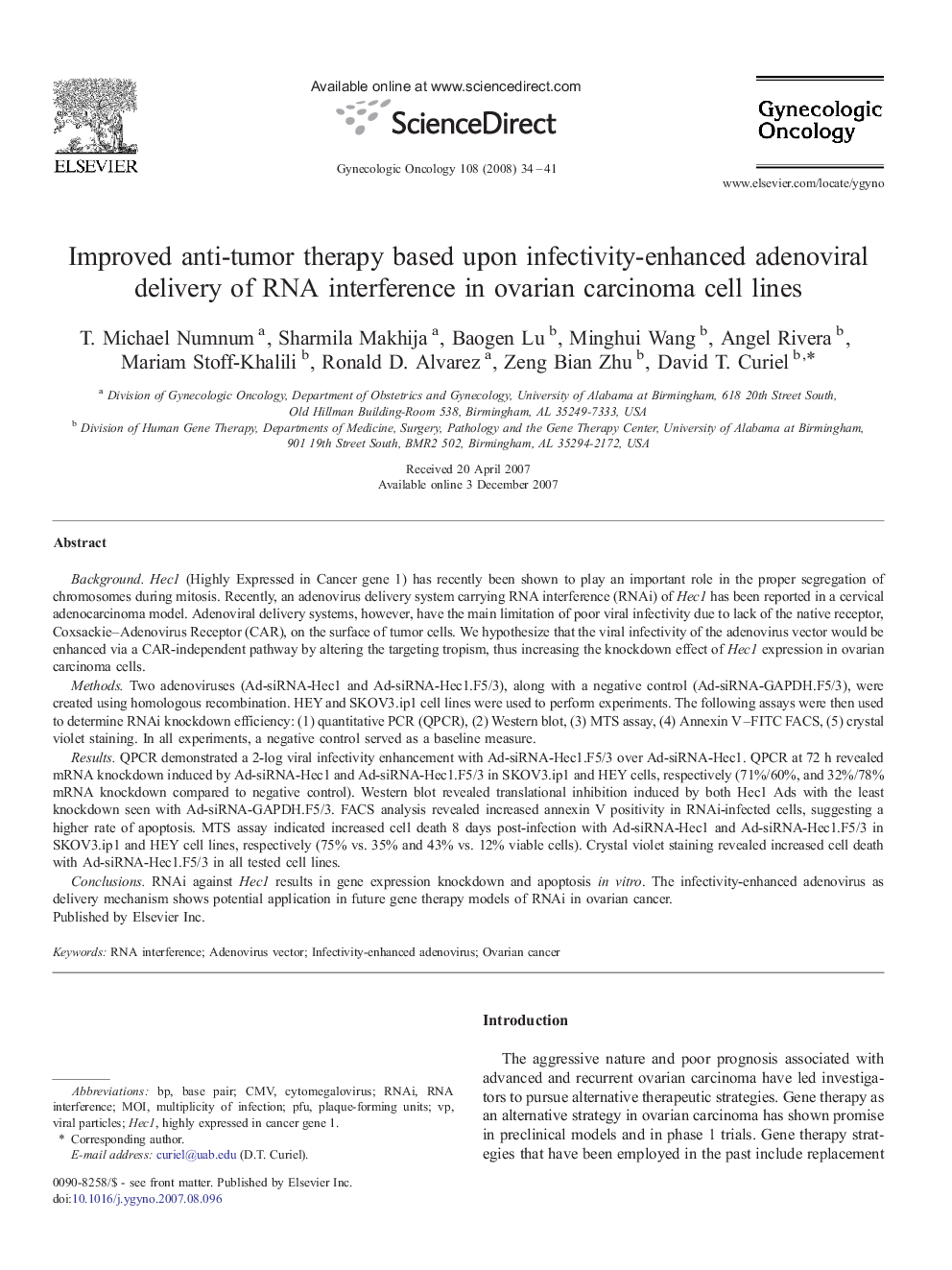| Article ID | Journal | Published Year | Pages | File Type |
|---|---|---|---|---|
| 3943369 | Gynecologic Oncology | 2008 | 8 Pages |
Background.Hec1 (Highly Expressed in Cancer gene 1) has recently been shown to play an important role in the proper segregation of chromosomes during mitosis. Recently, an adenovirus delivery system carrying RNA interference (RNAi) of Hec1 has been reported in a cervical adenocarcinoma model. Adenoviral delivery systems, however, have the main limitation of poor viral infectivity due to lack of the native receptor, Coxsackie–Adenovirus Receptor (CAR), on the surface of tumor cells. We hypothesize that the viral infectivity of the adenovirus vector would be enhanced via a CAR-independent pathway by altering the targeting tropism, thus increasing the knockdown effect of Hec1 expression in ovarian carcinoma cells.Methods.Two adenoviruses (Ad-siRNA-Hec1 and Ad-siRNA-Hec1.F5/3), along with a negative control (Ad-siRNA-GAPDH.F5/3), were created using homologous recombination. HEY and SKOV3.ip1 cell lines were used to perform experiments. The following assays were then used to determine RNAi knockdown efficiency: (1) quantitative PCR (QPCR), (2) Western blot, (3) MTS assay, (4) Annexin V–FITC FACS, (5) crystal violet staining. In all experiments, a negative control served as a baseline measure.Results.QPCR demonstrated a 2-log viral infectivity enhancement with Ad-siRNA-Hec1.F5/3 over Ad-siRNA-Hec1. QPCR at 72 h revealed mRNA knockdown induced by Ad-siRNA-Hec1 and Ad-siRNA-Hec1.F5/3 in SKOV3.ip1 and HEY cells, respectively (71%/60%, and 32%/78% mRNA knockdown compared to negative control). Western blot revealed translational inhibition induced by both Hec1 Ads with the least knockdown seen with Ad-siRNA-GAPDH.F5/3. FACS analysis revealed increased annexin V positivity in RNAi-infected cells, suggesting a higher rate of apoptosis. MTS assay indicated increased cell death 8 days post-infection with Ad-siRNA-Hec1 and Ad-siRNA-Hec1.F5/3 in SKOV3.ip1 and HEY cell lines, respectively (75% vs. 35% and 43% vs. 12% viable cells). Crystal violet staining revealed increased cell death with Ad-siRNA-Hec1.F5/3 in all tested cell lines.Conclusions.RNAi against Hec1 results in gene expression knockdown and apoptosis in vitro. The infectivity-enhanced adenovirus as delivery mechanism shows potential application in future gene therapy models of RNAi in ovarian cancer.
